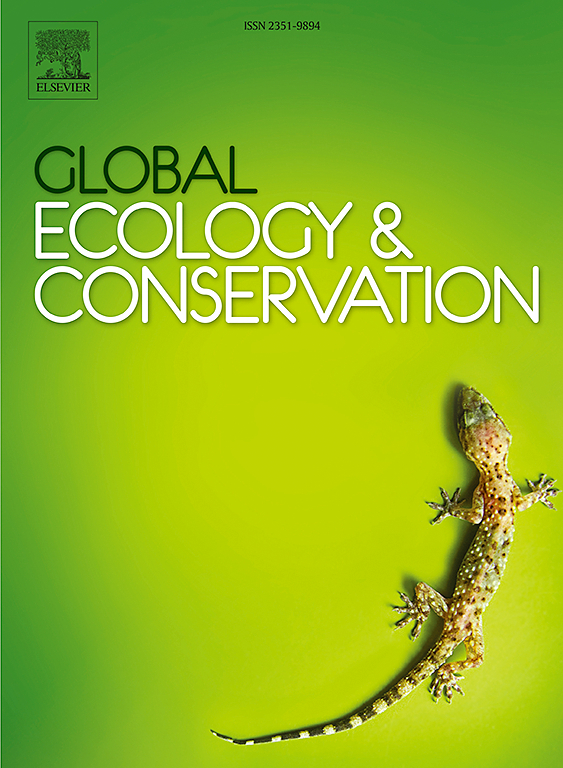Climate change may shift diet of the African savanna elephant: Preliminary results for 14 food tree and shrub species in the WAPOK transboundary ecosystem, West-Africa
IF 3.5
2区 环境科学与生态学
Q1 BIODIVERSITY CONSERVATION
引用次数: 0
Abstract
Climate change through an increase in temperature and a reduction of rainfall constitutes a serious threat to the African savannah elephants Loxodonta africana Cuvier. Climate change can directly shrink suitable habitats of the main food resources of elephants; hence reducing their food availability. In this study, we assessed the present-day and future suitable habitat for 14 tree and shrub species previously identified as main components of the elephant diet in the W-Arli-Pendjari-Oti-Mandouri-Keran (WAPOK) ecosystem, the largest savannah ecosystem in West-Africa. Bioclimatic and soil data were used to build the present-day and future models under two representative concentration pathway scenarios: RCP4.5 and RCP8.5. We further explicitly accounted for dispersal constraints and compared “actually” colonized habitats to suitable habitats based on the traditional assumption of unlimited dispersal. Mean diurnal temperature range, isothermality, temperature seasonality, annual temperature range, annual precipitation, number of dry months, and soil were the seven most important drivers of the distribution of the species. However, their relative importance varied greatly among species. Nevertheless, the annual precipitation had a high contribution (47–77 %) for nine out of the 14 species (∼ 65 %). Compared to present-day, results showed a moderate decrease in suitable habitats for seven out of the 14 species under scenarios RCP4.5 (1.30 – 12.95 %) and RCP8.5 (1.89 – 17.21 %). The remaining species, namely, Tamarindus indica, Annona senegalensis, Vitex doniana, Vachellia sieberiana, Kigelia africana, Adansonia digitata, and Borassus aethiopum will experience an increase of 2.97 – 51.68 % (RCP45) and (2.58 – 53.55 %) (RCP85) of their suitable habitats. Incorporation of dispersal constraints in the models showed that 9.26 – 48.26 % of currently suitable habitats will be occupied with the lowest and highest values for T. indica and A. digitata respectively. Top five species with moderate probabilities (35–48 %) to colonize and occupy suitable habitats included A. digitata, followed by V. sieberiana, V. doniana, D. microcarpum, P. erinaceus, and P. biglobosa. Species with the lowest probability to colonize suitable habitats were V. paradoxa, followed by K. africana, Khaya senegalensis, Balanites aegyptiaca, B. aethiopum, and T. indica. This study shows that climate change by reducing the availability of some food resources may shift diet of African savanna elephants. It further indicated that dispersal constraint is important in habitat suitability modeling. Finally, it provides valuable information on the potential impacts of climate change on key food resources of savannah elephants which can guide conservation and management actions in the WAPOK ecosystem.
求助全文
约1分钟内获得全文
求助全文
来源期刊

Global Ecology and Conservation
Agricultural and Biological Sciences-Ecology, Evolution, Behavior and Systematics
CiteScore
8.10
自引率
5.00%
发文量
346
审稿时长
83 days
期刊介绍:
Global Ecology and Conservation is a peer-reviewed, open-access journal covering all sub-disciplines of ecological and conservation science: from theory to practice, from molecules to ecosystems, from regional to global. The fields covered include: organismal, population, community, and ecosystem ecology; physiological, evolutionary, and behavioral ecology; and conservation science.
 求助内容:
求助内容: 应助结果提醒方式:
应助结果提醒方式:


